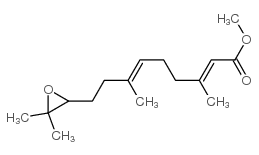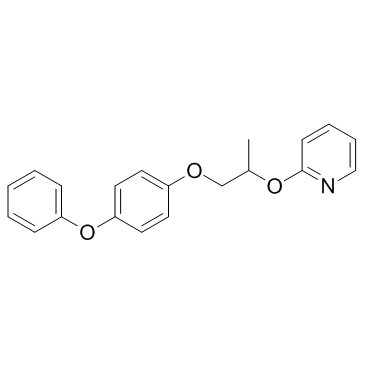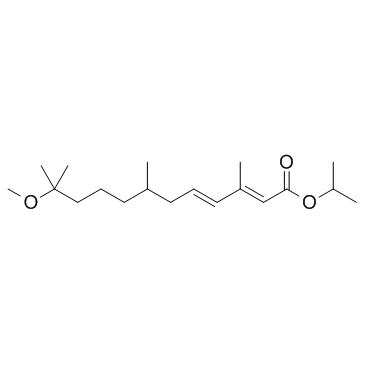| Structure | Name/CAS No. | Articles |
|---|---|---|
 |
Juvenile Hormone III (trans-trans-10,11-Epoxyfarnesenic Acid methyl ester)
CAS:24198-95-6 |
|
 |
Pyriproxyfen
CAS:95737-68-1 |
|
 |
Methoprene
CAS:40596-69-8 |